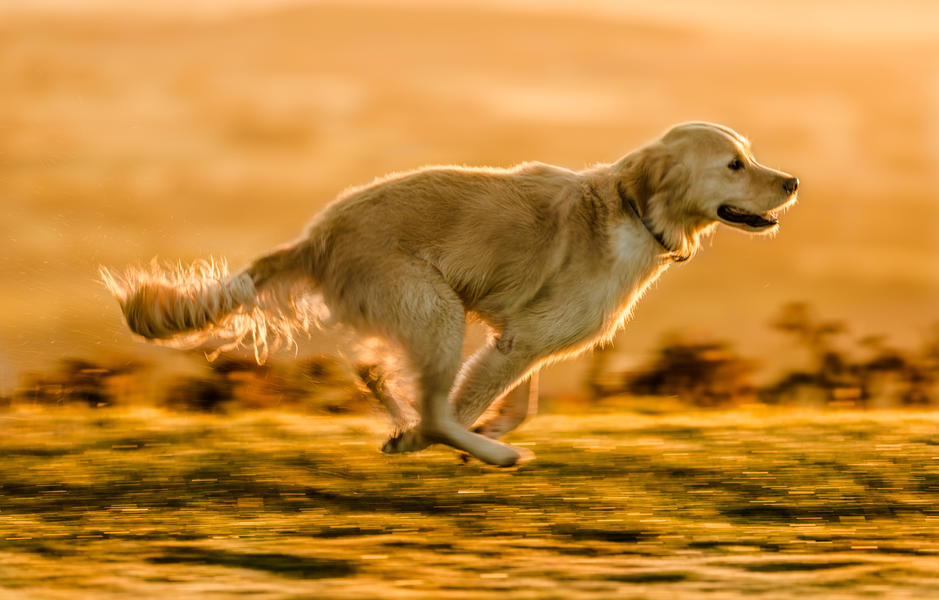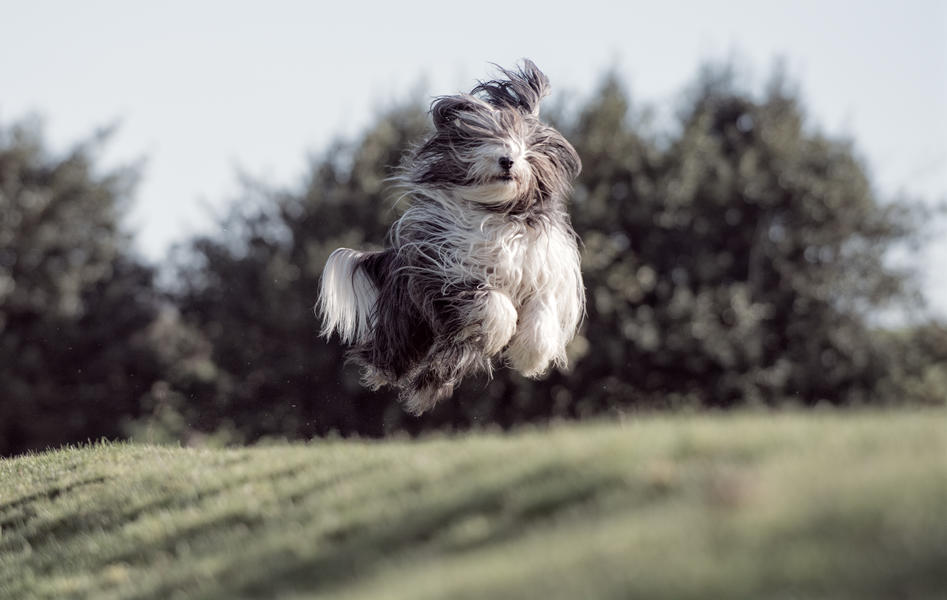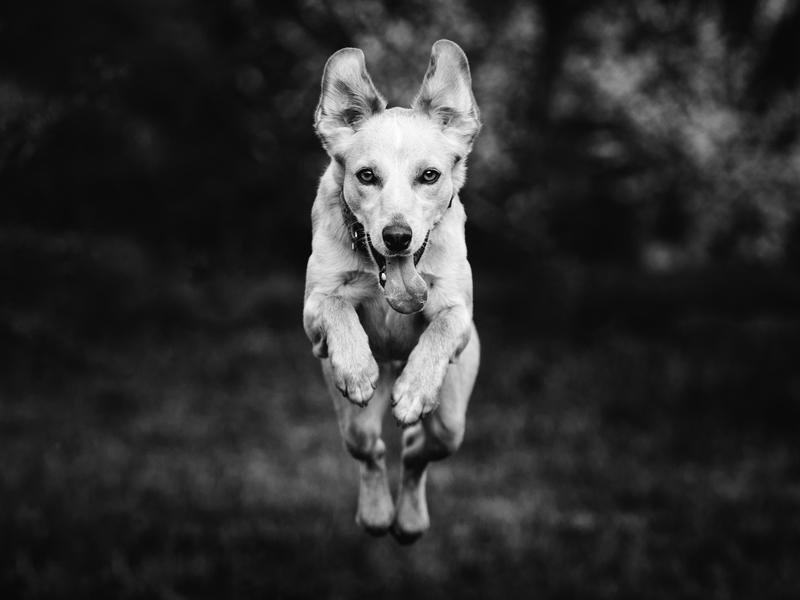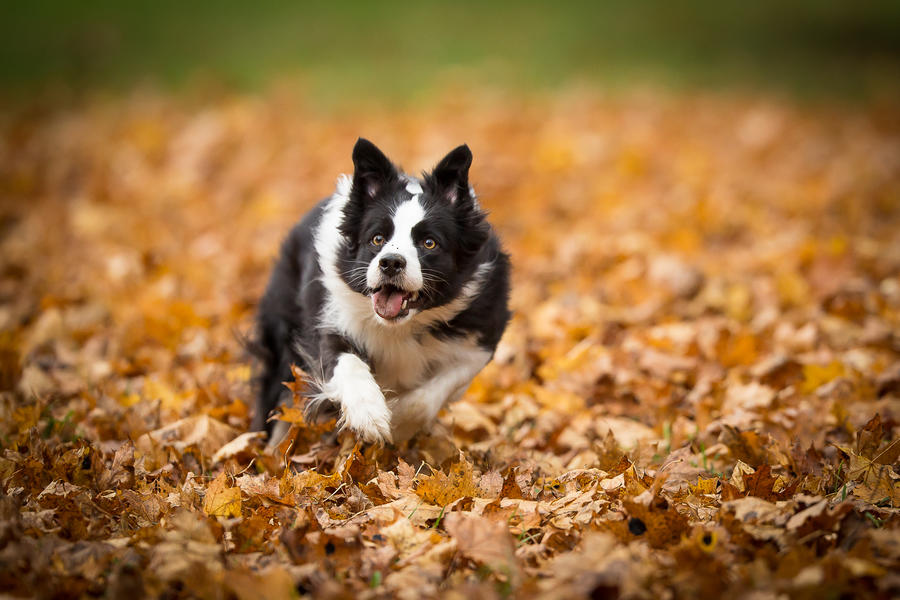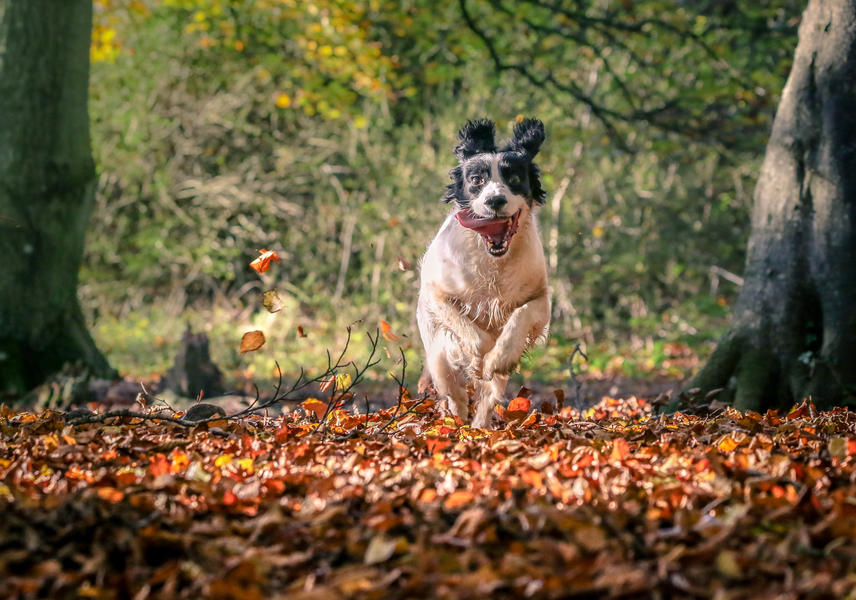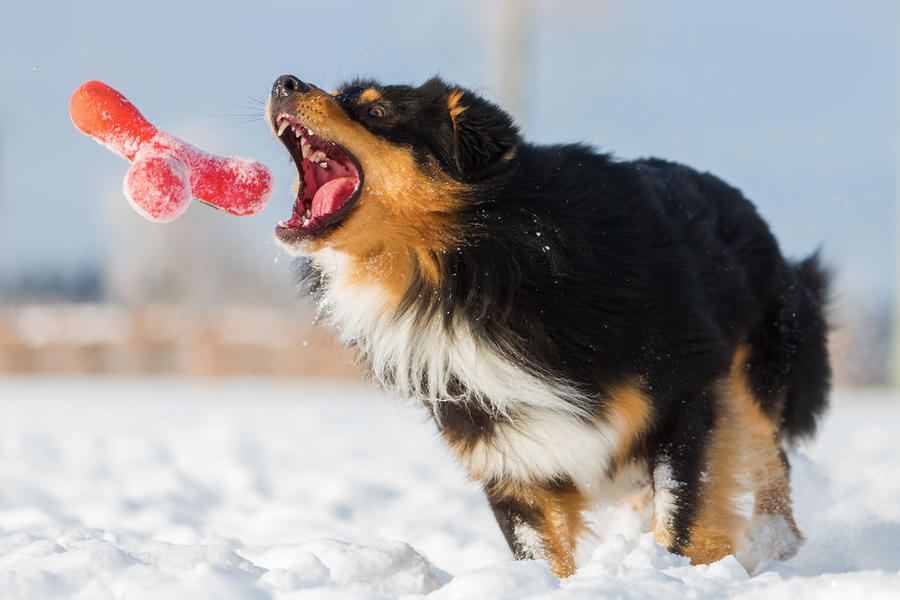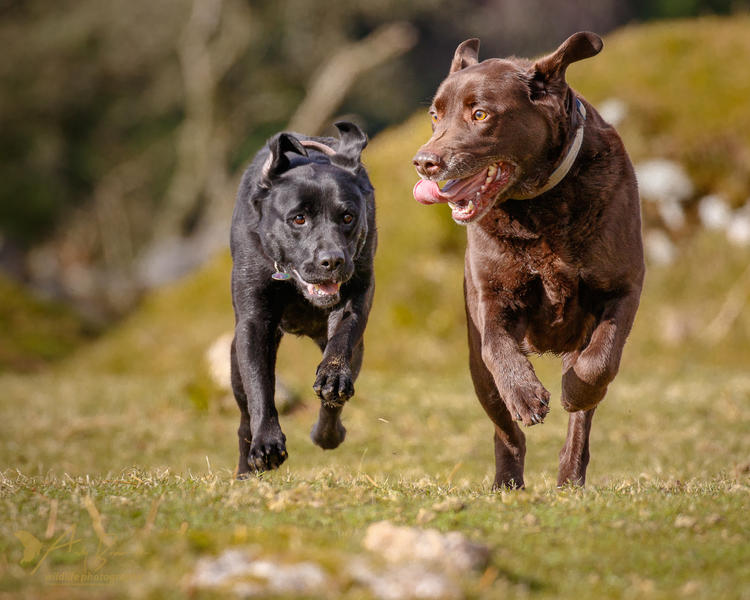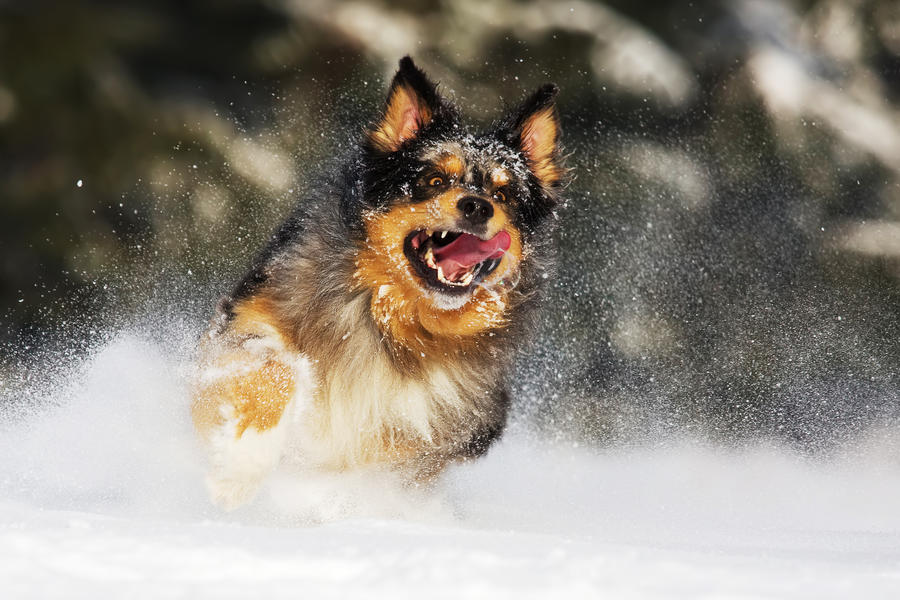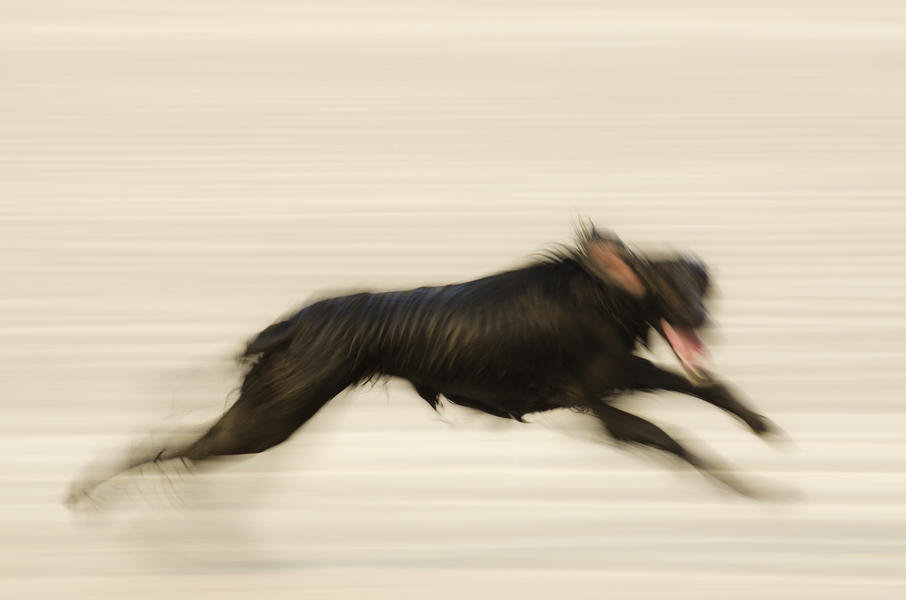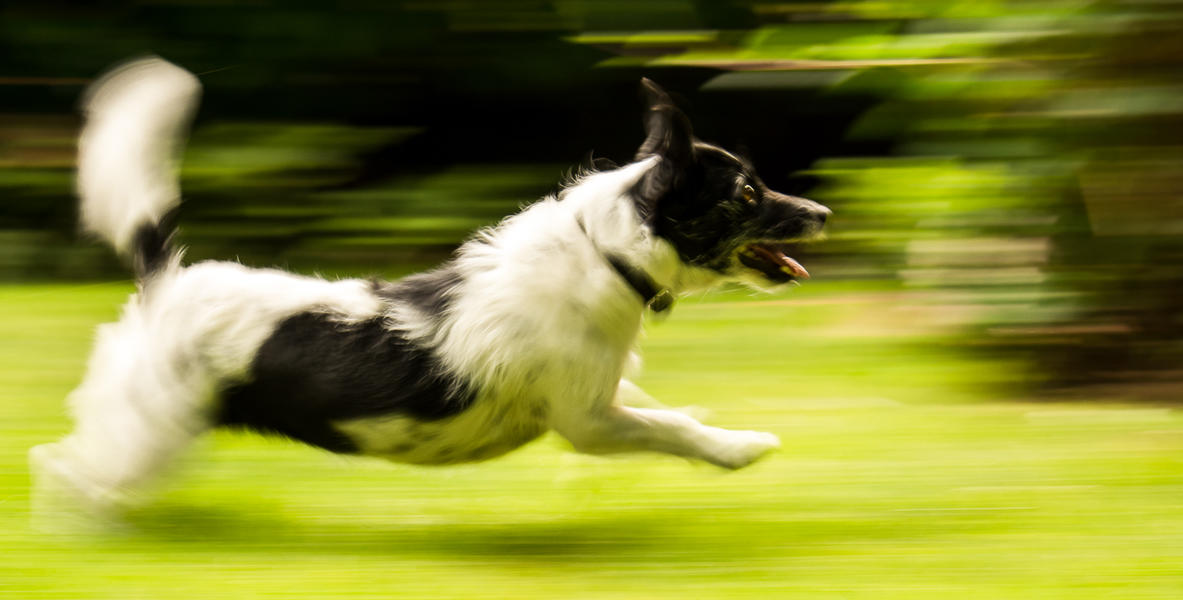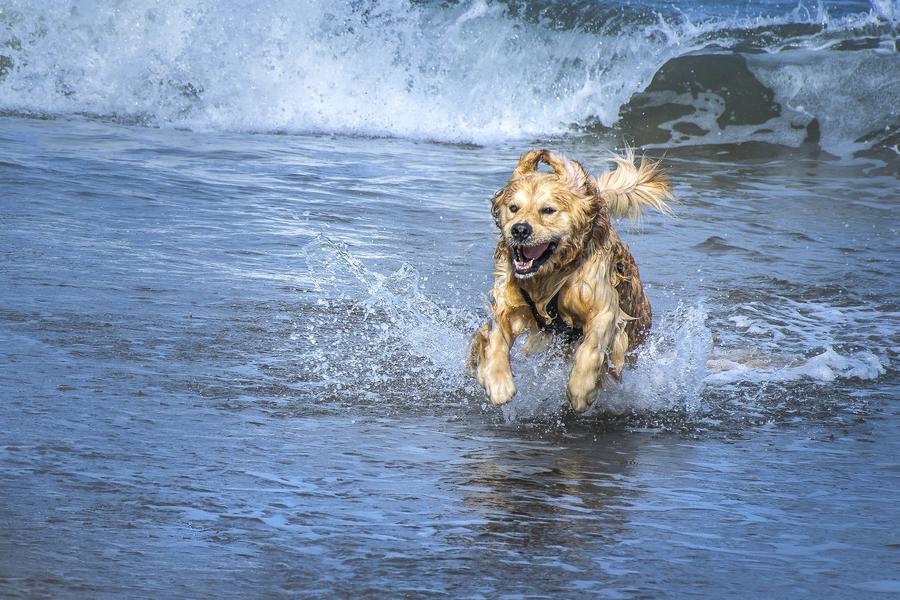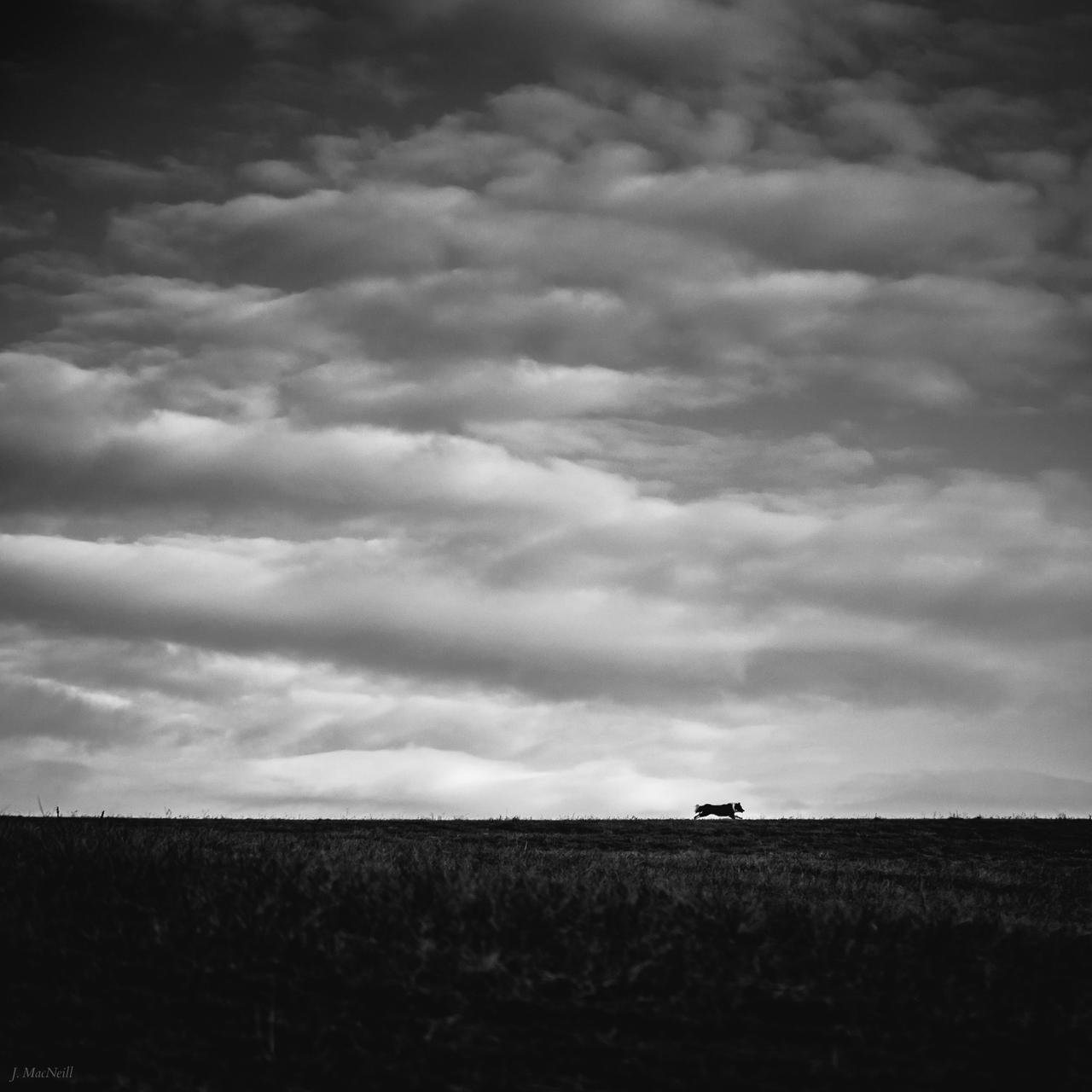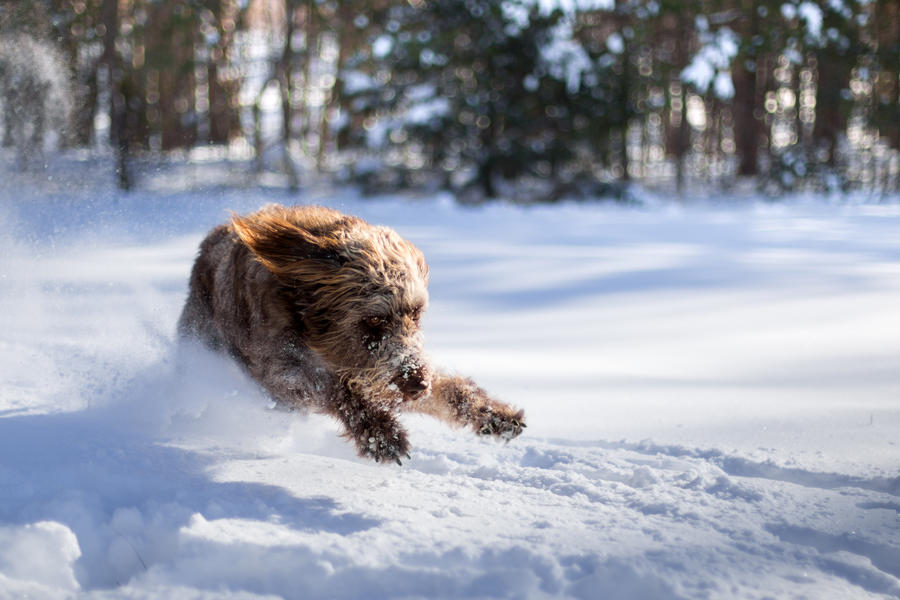Dog photography is probably one of the most popular genres on Photocrowd, but capturing your dogs in motion is not always easy. We look at some ideas to help you out
'Rushing Past' by Peter Orr ARPS, Canon EOS 1D X, 70-200mm, 1/200sec at f/2.8, ISO 100
1. Check the safety and access of your chosen location
Not every location will allow your dog to be let off the leash and run around. In all likelihood, you'll photograph your dog in a familiar location such as woodlands, parks or coastal locations but you should scout out your location beforehand and check there are no restrictions.
Be particularly aware also of any dangers to your dog. Is the location anywhere near a cycle lane, or a road or busy public pathway? It's best to select the most open and quiet location for your shoot, such as an open field, one where you are less likely to encounter hazards.
'DaisyNo in Flight' by Fred Flintstone, exposure unknown
2. Use focus tracking to keep your subject in focus
Perhaps the trickiest aspect of photographing running dogs is ensuring your subject is in focus. This takes practice and a good deal of experimentation but there are some in-camera solutions to assist you.
In these cases, you should utilise the tracking-focus functions on your camera. Each brand will have its equivalent (AI Servo for Canon, AF-C for Nikon and AFC+TR for Olympus - check your camera's manual to see how to access this function). Focus tracking means your camera will identify the moving subject and continuously shift its focus to keep that subject sharp no matter where it moves in the frame. As with standard autofocus, focus tracking is activated by pressing the shutter halfway down.
Focus tracking is a function wildlife and sports photographers often use in conjunction with their camera's continuous shooting mode in order to take a sequence of images to cover themselves for any occasions when the autofocus misses its target. Again, check your camera's manual to find how to set continuous shooting.
'Leaping Luna' by Dani Colston, Canon EOS 6D, 70-200mm, 1/400sec at f/6.3, ISO 400
3. Use back-button focusing
Another function that many sports and wildlife photographers employ is back-button focusing. Looking through your camera's manual and menu, you'll see that you are able to set certain functions to different buttons. Back button focusing separates focusing from your shutter button and assigns it to a button at the back. This means you can use your index finger for the shutter and your thumb for focusing. While this may sound more complicated than necessary, this solves the problem of accidentally losing focus when you depress the shutter button and allows you to focus and recompose your image with minimal fuss. Used in conjunction with focus tracking and continuous shooting, you should find focusing on running dogs much easier.
'Carly in Action' by Jiří Šneider, Canon EOS 5D Mark III, 200mm, 1/1600sec at f/2.2, ISO 1600
4. Engage your dog in play
The easiest way of capturing your dog in action is to engage them in play. Not only will this ensure you capture them in motion, you will also be in with a good chance of photographing the excited expression on their face, such as in this shot by Martyn Iles. Martyn has photographed his dog head on, meaning we are treated to the joyful look on the dog's face. Crucially, the spaniel is looking directly into the lens, which really draws us into the image.
'Racing Through the Leaves' by Martyn Iles, Canon EOS 7D Mark II, 150-600mm, 1/400sec at f/8, ISO 800
5. Get down low to see the world from a dog's-eye view
One of the key ingredients of any image of an animal, whether they're pets or wildlife, is to ensure you get down to their level. In this way, the viewer is drawn into the animal's world more, sees the world as they see it. This creates a level of intimacy in your image that might otherwise be lost.
'Australian Shepherd Snaps at a Flying Toy' by Christian Müller, Canon EOS 5D Mark III, 70-200mm, 1/5000sec at f/2.8, ISO 400
6. Use a wide-open aperture to give your image a three-dimensional feel
You'll see that the majority of these shots have one thing in common and that's their shallow depth of field. This shot by Andy Brown is a particularly good example. By using an aperture of f/5.6, Andy has ensured the background is nice and blurred meaning we have a three-dimensional image and that the dogs almost leap out of the frame at you.
A shallow depth of field can also help create a visual distinction between the background and foreground when the shades and tones of both areas are relatively monochromatic (a lot of greens and browns, for example).
'Running' by Andy Brown, Canon EOS 7D Mark II, 100-400mm, 1/1600sec at f/5.6, ISO 320
7. Use a fast shutter speed to freeze the action
While aperture is important, your central concern is ensuring the action is nice and sharp, so you're looking to achieve fast shutter speeds. As you're shooting on location and dealing with good natural light, this is unlikely to be an issue. However, if you face issues where you're having to sacrifice aperture or shutter settings due to low light, try increasing your ISO first. In this shot, we can see that Christian Müller has opted for an ISO of 320, giving him a fast shutter speed of 1/2000sec which has frozen the Australian Shepherd amongst the clouds of snow driven into the air.
'Action with an Australian Shepherd in the Snow' by Christian Müller, Canon EOS 40D, 310mm, 1/2000sec at f/6.3, ISO 320
8. Pan your shots for creative and interesting shots
It's worth experimenting with your images and trying something a little more creative. In this image by Adrian Sadlier, we see that he has panned his camera left to right in order to track the path of his subject. But where Dianne Giles (below) has tried to keep her Jack Russell Terrier in focus (and the background motion blurred) by keeping her lens fixed on the subject, Adrian has used the up and down loping run of the Irish Red Setter to his advantage by shooting at 1/20sec and creating a strange impressionistic image.
'Freedom' by Adrian Sadlier, Nikon D7000, 70-200mm, 1/20sec at f/13, ISO 400
'Supersonic Nibbler' by Dianne Giles, Nikon D7100, 55-300mm, 1/30sec at f/8, ISO 200
9. Keep your distance by using a telephoto lens
One of the key benefits of using a telephoto lens is that you can keep your distance from your dog and allow them to roam free without being influenced by your close proximity. By staying some distance away, you can get much more coverage of your dog in its environment. This image by John-Paul Phillipe is a fine example. By using an 18-140mm lens he has been able to stay away from his Golden Retriever and allow it to play among the waves. John-Paul would have then been free to track his dog left and right and capture them in every direction.
'Dynadog!' by John-Paul Phillippe, Nikon D5300, 18-140mm, 1/640sec at f/7.1, ISO 100
For a more extreme example, we can look to Jennifer MacNeill's beautiful black & white image of her Border Collie running along a rural Pennsylvanian hill.
'Run, Dog, Run' by Jennifer MacNeill, Canon EOS 6D, 24-105mm, 1/4000sec at f/4.5, ISO 500
10. Get in close with a wideangle lens
There are occasions where a wideangle lens will work wonders for a shot. This image by Paleblue works so well because of how dominant the dog is within the frame. We can also see that the wideangle lens has thrown the background right into the distance giving us a brilliant sense of scale that emphasises the wintery environment.
'Wish I was a Fox' by Paleblue, Canon EOS 6D, 50mm, 1/4000sec at f/1.4, ISO 100
